Chapter 9- The Endocrine System
The chemistry of Hormones
hormones- chemical messengers made by endocrine glands
- responsible for some types of regulatory effects on specific types of cells, tissues or organs
- most of hormones are classified as amino-acid based molecules or steroids.
- Amino acid based hormones
- proteins
- peptides
- amines
Steriods- constructed from cholesterol
Prostanglands- produced from highly active lipids
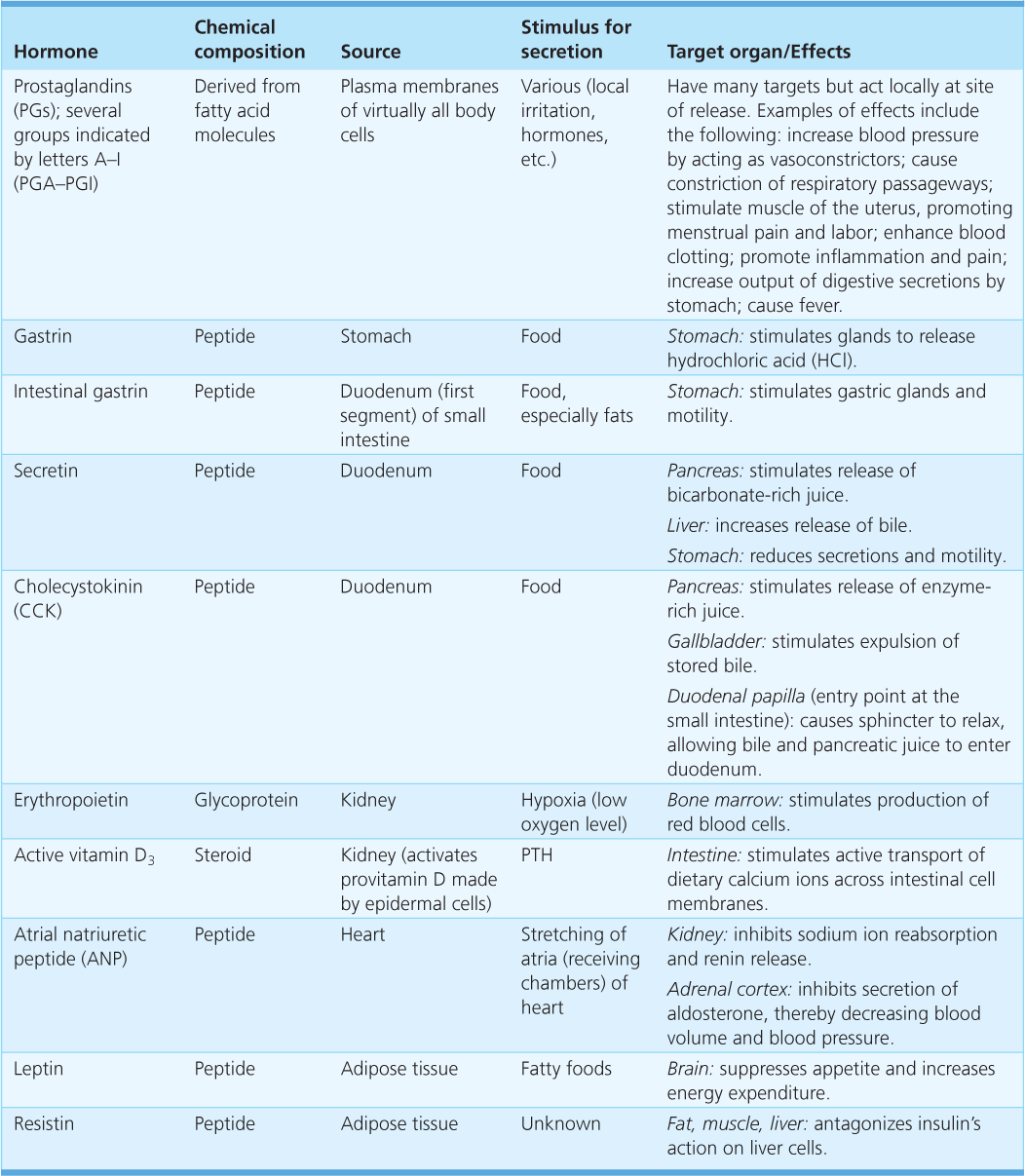
Hormone Action
hormones only affect specific types of tissues or organs
target cells must have only a certain type of protein receptor
cells work due to the cause of hormone binding
hormones can:
activate/inactivate enzymes
stimulate or inhibit cell division
change the plasma membrane by opening or closing the ion channels
Direct Gene Activation
diffuses through the plasma membrane of target cells
goes into the nucleus
binds to a center types of protein inside the nucleus
as well as binds to a certain type of site present of cell’s DNA
activates genes that result in synthesis of brand new proteins
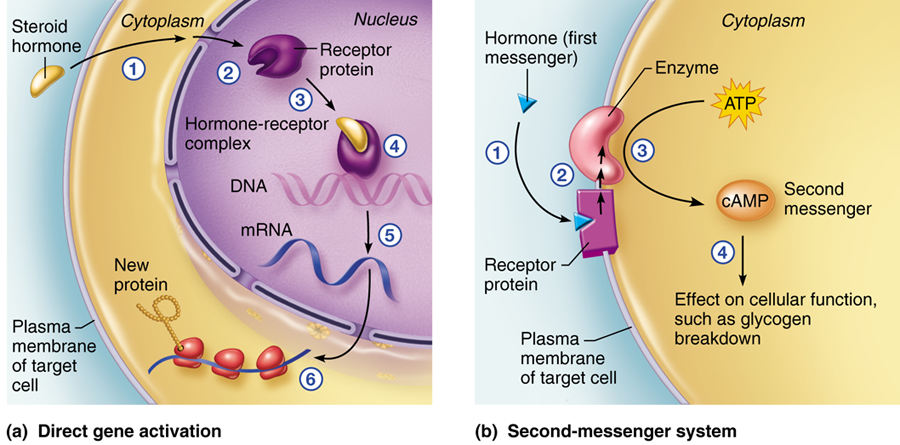
Second Messenger System
- the hormone attaches itself to a membrane receptor
- the hormone doesn’t go inside the cell
- instead it sets off multiple reactions that activates an enzyme
- catalyzes a reactions that makes a second messenger molecule
- oversees additional intracellular change to gain a specific response
Stimuli for Control of Hormone Release
hormone blood levels are supported by negative feedback
Stimuli or low hormone levels present in the blood activate the release of more hormone
The hormones stop releasing once a normal level in the blood is reached
stimuli that activates the endocrine glands are categorized into three things:
hormonal (most common) - endocrine organs are activated into action by other organs
humoral- changes blood levels of specific types of ions when hormone release occurs
neural- stimulates hormone realease, controlled by sympathetic nervous system
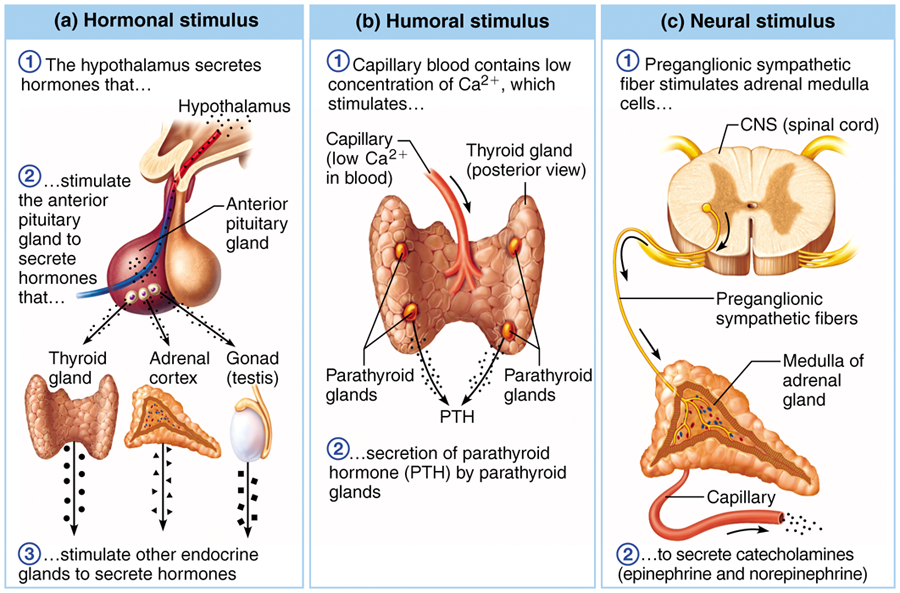
The major endocrine organs
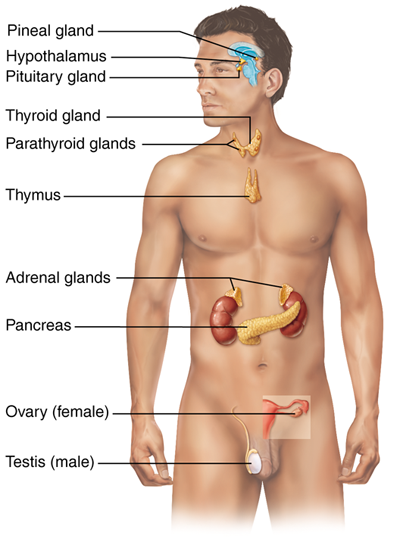
The anterior pituitary, thyroid, parathyroids, and adrenal only have endocrine functions
pancreas and gonads have both endocrine and exocrine functions
both gland types are made from epithelial tissue
endocrine glands are ductless glands that make hormones which releases into the bloodstream or lymph
exocrine glands release their substances like sweat and tears at the body’s surface or into body cavities through the ducts
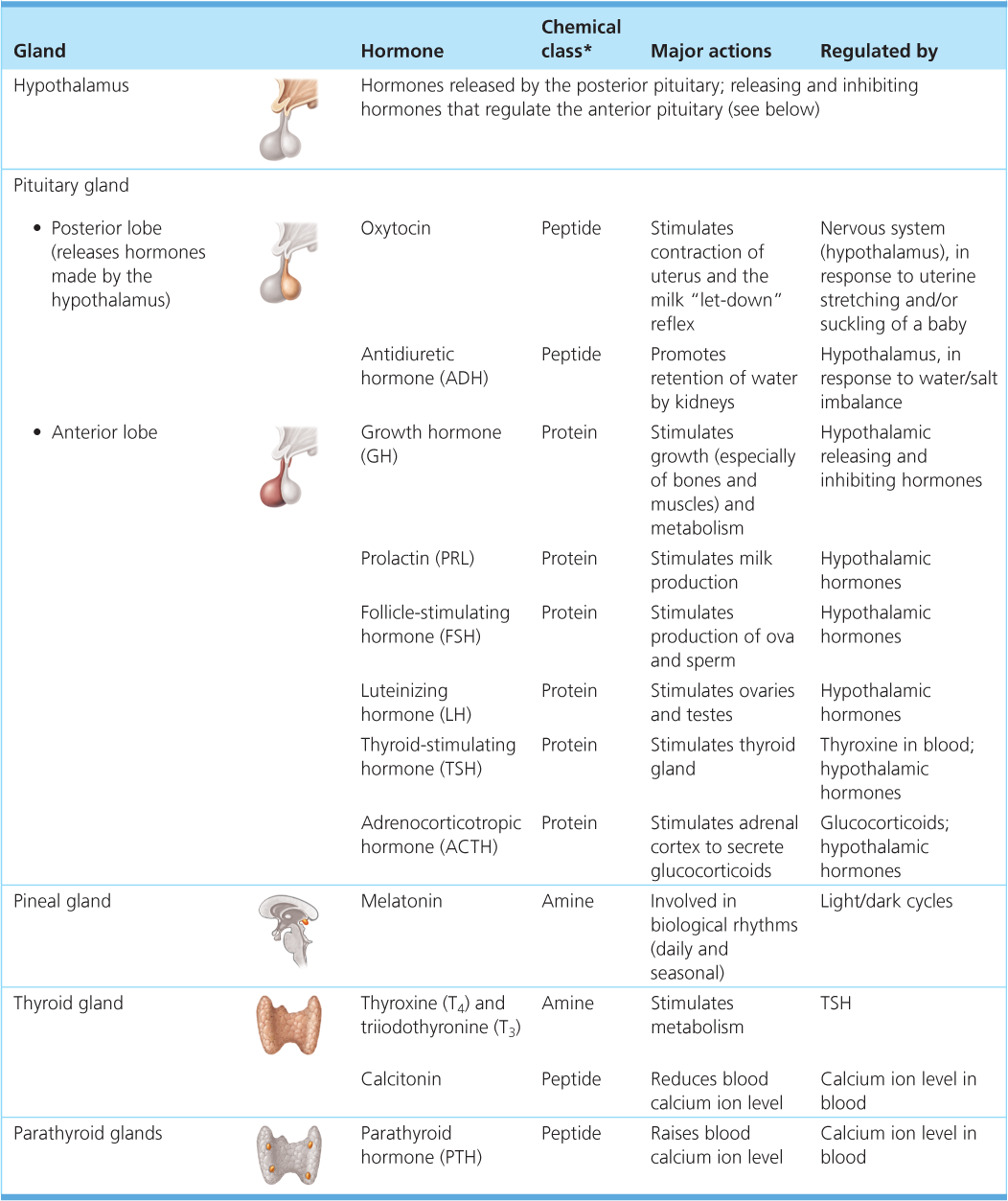
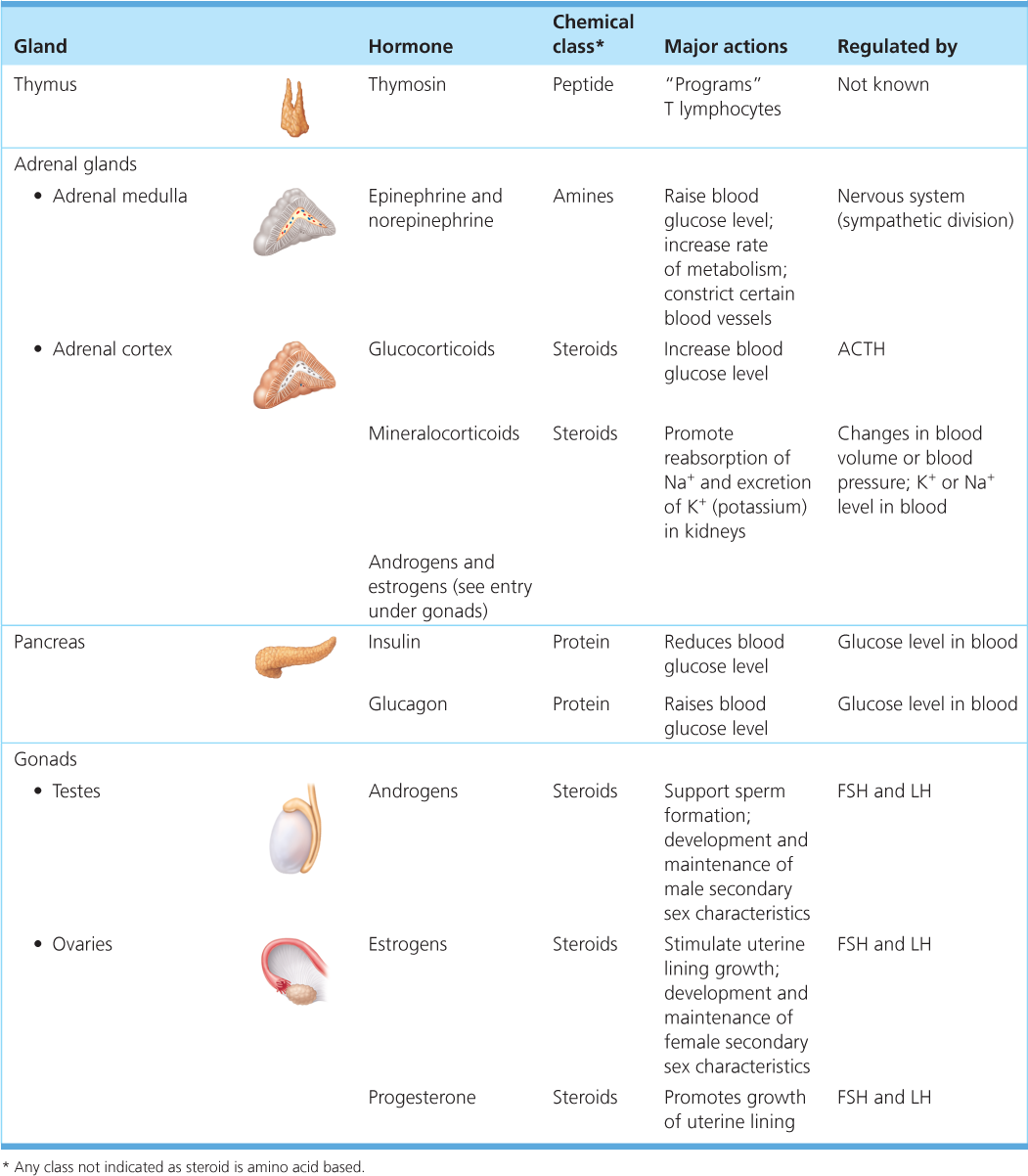
Pituitary Gland and Hypothamalus
pituitary gland
- about the size of a pea
- hangs by a stalk from the inferior surface of the hypothalamus of the brain, tightly surrounded by the sella turcia of the sphenoid bone
- has two functional lobes
- anterior pituitary- glandular tissue
- posterior pituitary- nervous tissue
anterior pituitary
- 6 anterior pituitary hormones
- 2 help out non endocrine glands
- 4 help out to stimulate the other endocrine glands
- characteristics
- proteins/peptides
- controlled by second messenger systems
- regulated by negative feedback from hormonal stimuli
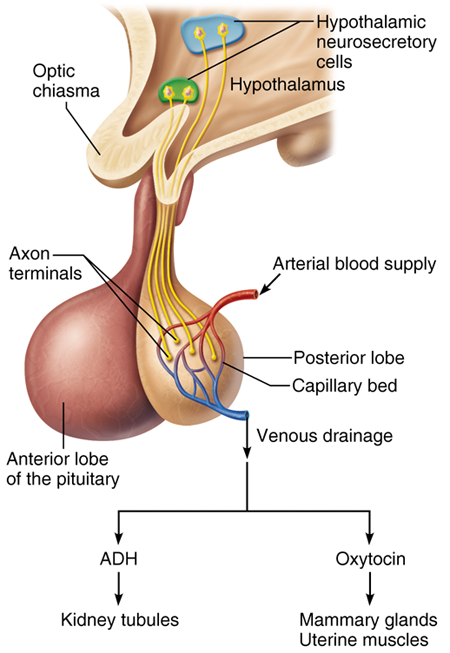
Posterior pituitary and Hypothalamic Hormones
Oxytocin- hormones that is released in big amounts during childbirth and nursing.
- stimulates powerful crontraction of the uterus muscle during sexual relations, labor, and breastfeeding.
- causes milk ejection
- used to stop postpartum feeding
- stimulates the led down reflex
Antidiuretic hormone(ADH)- chemical that prevents urine production
- causes kidneys to absorb more water from the already produced urine
- causes amount of urine to decrease and blood amount to increase
- water is essential for ADH
- ADH helps with blood pressure by shrinking the small arteries, this is know as vasopressin
- drinking alcohol, and drugs classified as diuretics dont allow ADH to happen
- results in more urine production
- alcohol causes dehydration
Growth Hormone (GH)
- general metabolic hormones
- helps with growth of skeletal muscles and long bones
- causes amino acids to be constructed into proteins
- causes lipids to be broken down into a source of energy
Thyroid Gland
found at base of the throat
made up of two lobes connected by a central mass
secretes two hormones
- thyroid hormone
- calcitonin
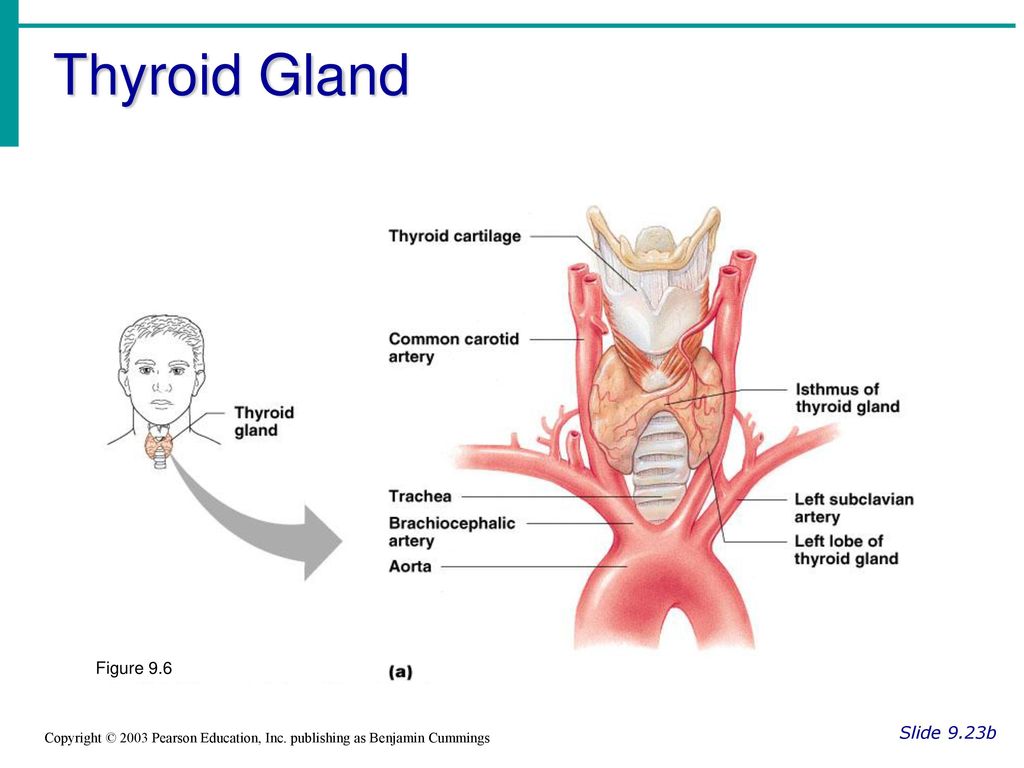
Thyroid Hormone
- metabolic hormone
- made up of two active iodine containing hormones
- Thyroxine (T4)- produced by thyroid follicles
- Triiodothyronine (T3)- conversion of T4 at target issue
Calcitonin
- lowers calcium blood level by causing bone deposition
- Antagonistic to parathyroid hormone
- made by parafollicular cells
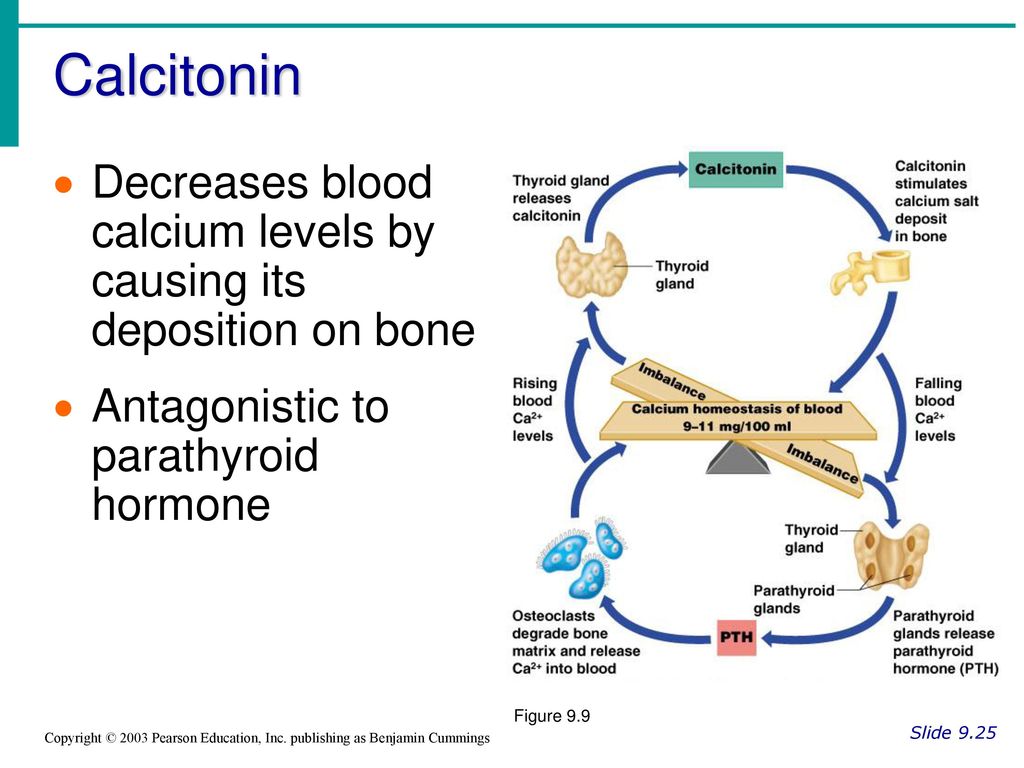
Parathyroid Glands
- tiny masses on posterior side of the thyroid
- secrete parathyroid hormone
Adrenal Glands
- made up of two glands
- cortex- outer glandular region in three layers
- medulla- inner neural tissue region
sits on top of the kidneys
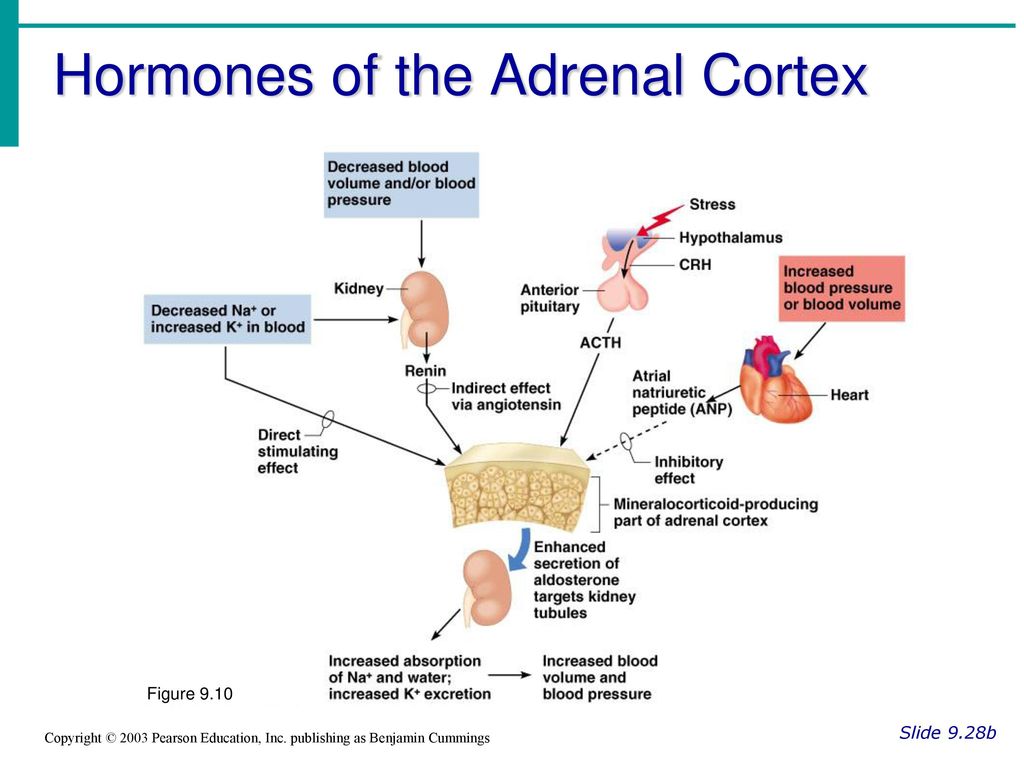
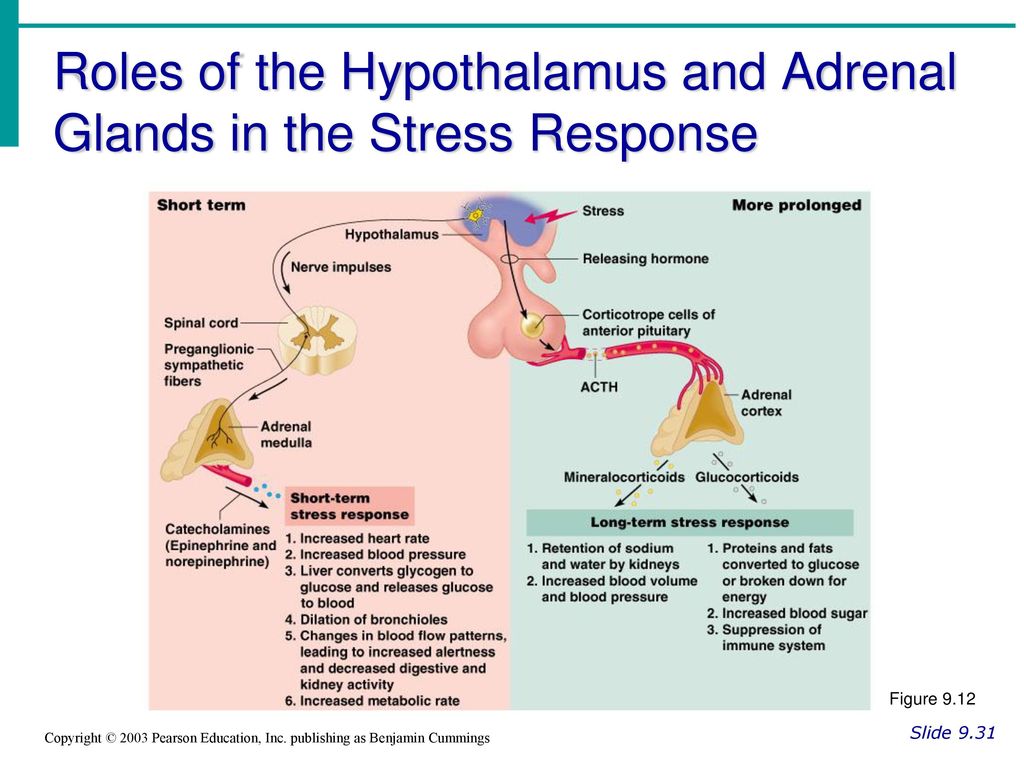
Hormones of the Ovaries
- Estrogens
- made by Graafian follicles of the ovaries
- stimulates the development of the secondary female characteristics
- matures female reproductive organs
- helps make the uterus ready to receive a fertilized egg
- helps maintain pregnancy
- makes the breasts ready to make milk
- Progesterone
- made by the corpus luteum
- acts with estrogen to bring about the menstrual cycle
- helps withe creation of an embryo in the uterus
Hormones of the Testes
- testes cells are hormone producing
- produces several androgens
- testosterone is the most crucial androgen
- responsible for male sex characteristics
- helps with growth and maturing of the male reproductive system
- needed for sperm cell making
Endocrine Function of the Placenta
- makes hormones that maintain pregnancy
- help with the delivery of childbirth
- makes human chorionic gonadotropic (HCG), estrogen, progesterone, and other hormones
Developmental Aspects of the Endocrine System
- most endocrine organs function good until old age is reached
- menopause occurs due to the inefficient function of the ovaries
- problems linked to reduced estrogen is common, known as osteoporosis
- growth hormone production decline with age
- many endocrine glands decrease due to the rising of age